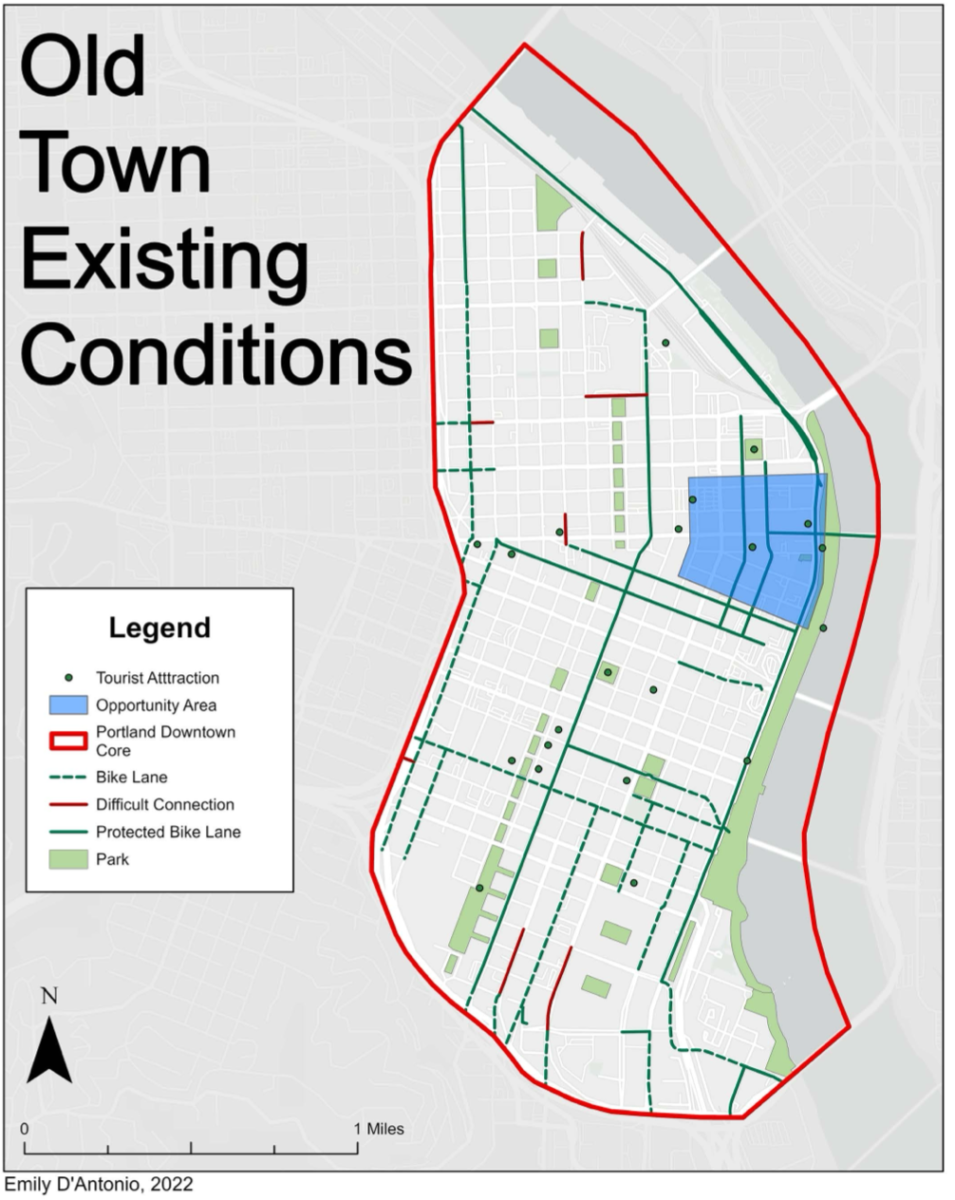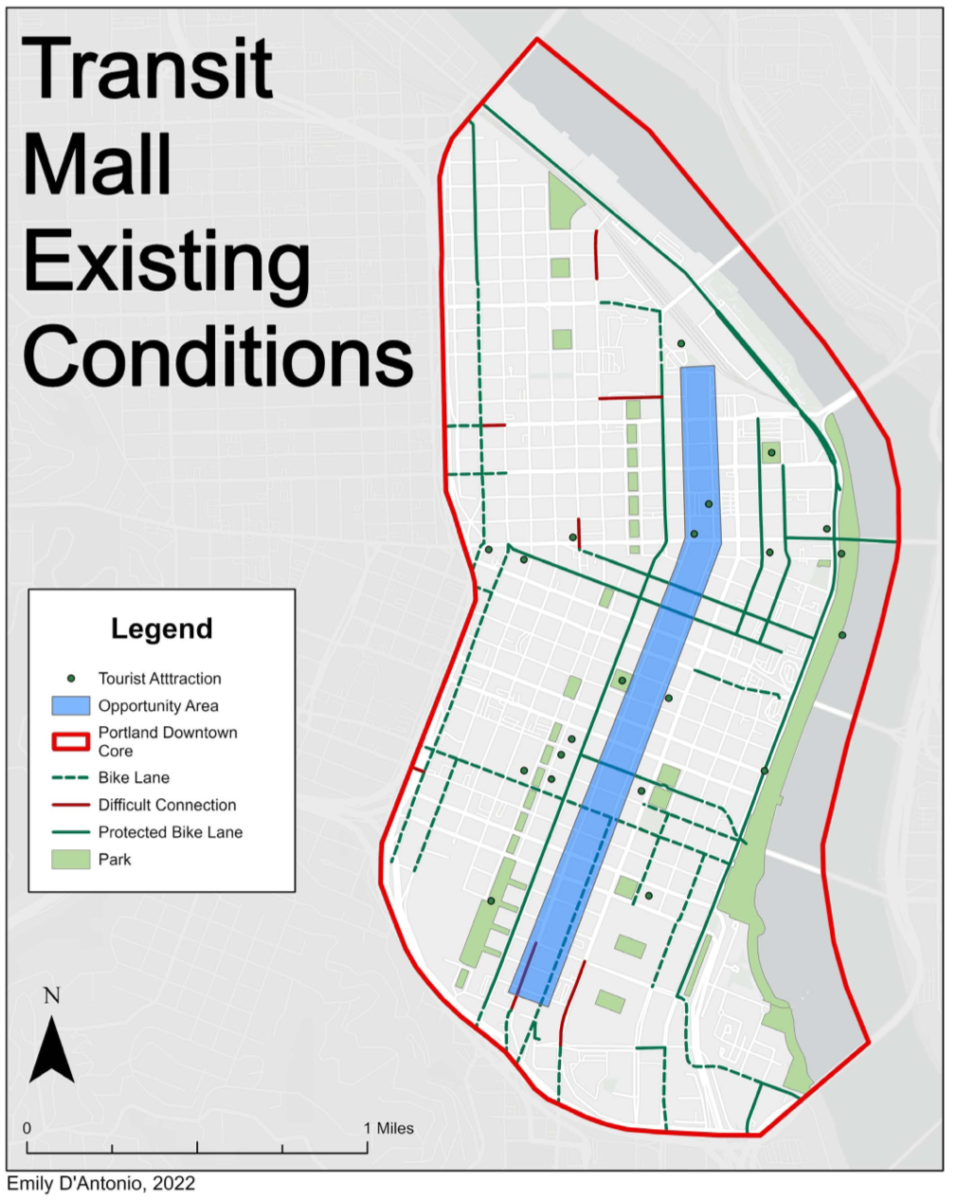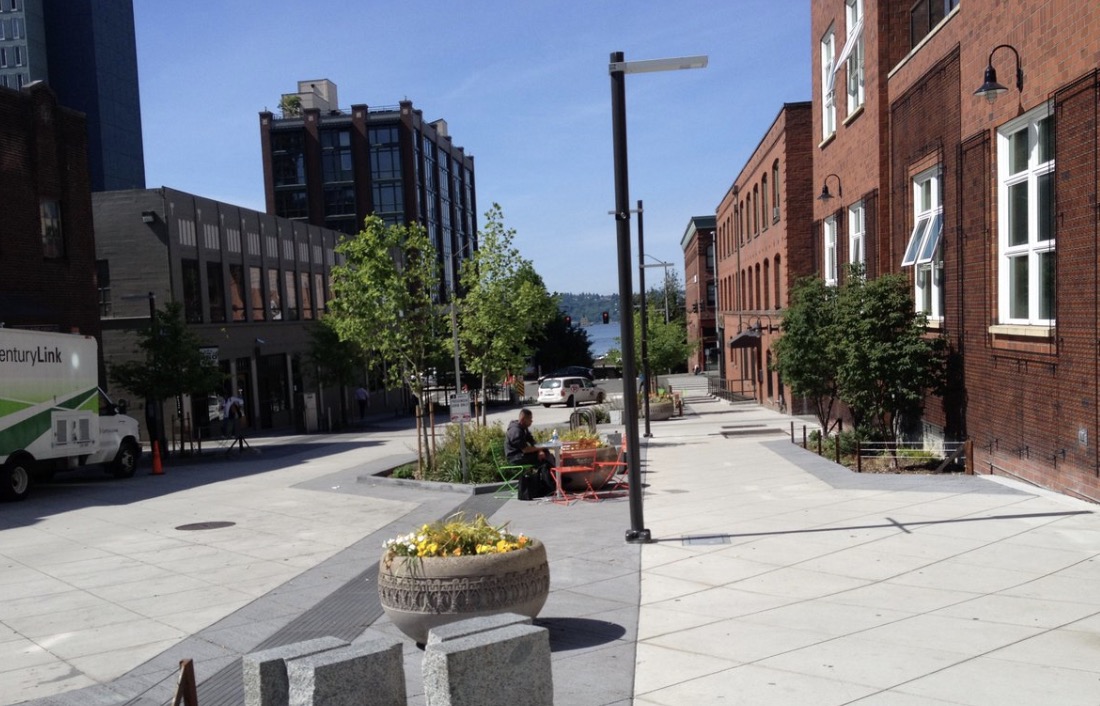“Walking on the downtown streets, it appears the car is the predominant user and all else is relegated to the sidewalks.”
– From the plan
Turn on any local TV news channel and you’ll hear a litany of fear-mongering terms to describe post-2020 downtown Portland: “dead,” “lawless,” and “war zone” are a few popular ones. But a new report from Portland State University graduate students posits that downtown’s real problem is something you won’t hear Fox News pundits talking about — it’s overrun with cars.
With their “Portland Downtown Living Streets Plan,” PSU Transportation Research and Education Center (TREC) students are proposing solutions in the form of streets that prioritize people over the large steel boxes many of them use to transport themselves. Four students — Cameron Bennett, Owen Christofferson, Emily D’Antonio and Aidan Simpson — created the plan, with longtime urban planner Cathy Tuttle (who has a downtown Portland plan of her own) serving as an advisor.




“The streets of the Portland Downtown Core are currently dominated by single occupancy vehicles. Walking on the downtown streets, it appears the car is the predominant user and all else is relegated to the sidewalks,” the plan states. “The Portland Downtown Living Streets Plan is an effort to envision a network of pedestrian-oriented streets within the Downtown Core.”
The term “living streets” comes from (who else?) the Dutch, who used the concept to guide their cities away from cars during the 1970s (their term for it is woonerf). The PSU plan states that living streets “allow people and businesses to use the streetscape for purposes [other than driving cars]…it is a framework for all to feel welcome in the streets whether they live, work, study, shop, worship, or socialize downtown.”
“World-class cities are intuitively navigable – on foot – on vibrant, living streets. This inviting urban streetscape is missing in much of Portland’s downtown. Residents, visitors, and businesses could all benefit from a change,” the plan states.
The plan identifies several areas downtown that could use some rehabilitating to turn them into places where people would actually want to go. In these locations, car access would be limited and the streets would be activated with public art, street furniture, food trucks and more. It recognizes the Portland Bureau of Transportation’s recent efforts to open up streets for people across the city with their Healthy Business program, but suggests an expanded approach specifically focused on reducing car traffic downtown.
If you think this idea is just some newfangled urbanist fantasy, look at the City of Portland’s 1972 Downtown Plan, which calls for traffic-free areas downtown to get rid of the noise, smell and threat of automobiles. In that 51 year-old-document, planners propose 13 carfree sites across downtown Portland where people could “talk, play, look, think and enjoy.” The 1972 plan lays out concerns with downtown Portland’s reputation, and states people would perceive it more favorably if there was less car traffic.
The new “living streets” plan proposes four “opportunity areas” across downtown: Old Town, the Burnside Wedge, Extended Halprin and the Transit Mall. These sites were chosen based on factors including size, nearby bike and public transit infrastructure and proximity to commercial and tourist areas.
Let’s look at what the plan proposes for Old Town. Once known for nightlife and donuts, this part of downtown Portland has amassed a pretty seedy reputation over the last few years. The living streets plan acknowledges that the prevalence of social services in Old Town have made it an attractive place for people to set up encampments and says that “balancing the needs and engagement of community members, businesses, and visitors will be very challenging.”
But what if this challenge could be an opportunity to do something new? The students propose two designs for an Old Town with “living streets”: a temporary pedestrianized area for nights and weekends and a permanent configuration. The temporary design builds on the existing Old Town carfree zone and proposes expanding this program and making it less police-oriented and more welcoming, relying on physically retractable bollards to divert cart traffic instead of police barricades.
The permanent design might involve a road diet for busy streets in Old Town like SW 2nd, 3rd and 4th aves, which would enable activating the space for gathering. The plan also suggests a “promenade” configuration on NW Couch and Davis streets, which could involve adding cobblestones and people-oriented amenities, like interactive public art or landscaping, to the streets.
Before implementing these projects, the students recommend planners enact pop-up demonstrations in the spaces so people can get used to the idea of the streetscape changes. They also propose potential funding mechanisms for the plans, such as through PBOT’s Plazas and Healthy Business programs, neighborhood associations and federal and state transportation department grants.
At this time, there doesn’t appear to be a concrete plan to get these projects up and running: the plan is intended to “provide a framework for policymakers and activists to advance the implementation of “Living Streets” within the Portland Downtown Core…and provide a baseline for future efforts to implementation.”
At any rate, it’s a robust document that lays out a vivid picture of what downtown Portland currently looks like and where its potential lies. Check out the full plan at the TREC website.




